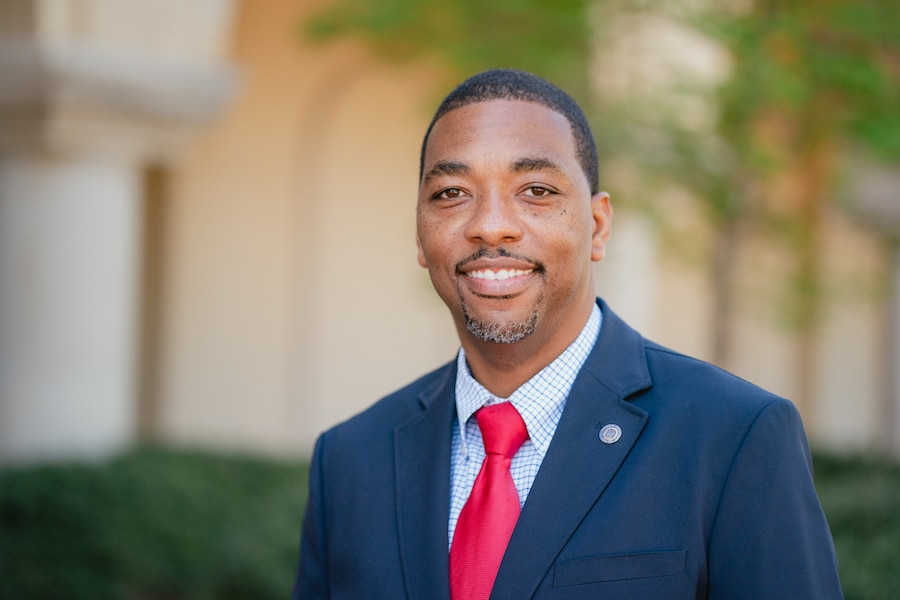The existence of a second Southern Baptist state convention in Texas raises a few questions. Most commonly our brothers and sisters across the country ask, “Why?” Convention leaders have answered that question frequently. The second question careful observers might ask is, “Why is this convention different in so many ways?” Whether the observer is happy or dismayed at the formation of the newest Southern Baptist state convention, the differences are observable. The “Why?” question is worth answering one more time.
Simply, the founders of the Southern Baptists of Texas Convention were convicted of the truth of the Bible—that everything the Bible says is true in the plain sense in which it’s meant—and that this foundational conviction was worth separating over for the integrity of Southern Baptists’ cooperation in the gospel. Inerrancy is not a doctrine of mindless literalism or mechanical dictation, as some scoffers have said. The Bible, in its original autographs, is without any error in anything it affirms as true. The doctrine of inerrancy is the belief around which the Southern Baptist Convention rallied during its most recent doctrinal reformation. Some may prefer to call the Bible “authoritative,” but conservatives counter that a car’s owner’s manual is authoritative without being inerrant or inspired by God. “Inerrancy” is the clearest and least slippery word available to describe the evangelical, Baptist understanding of God’s Word.
The inerrancy of Scripture is foundational to many convictions about the gospel and how Southern Baptists join together to preach it everywhere. It is foundational to all the reasons why the SBTC’s founders started a new convention. Their disagreement with burgeoning Darwinism at Baylor (and unwillingness to fund it) was based on the witness of Scripture that God made one man and one woman, the parents of all people. This was either “true” or “not true” in their minds. Abortion opposition—a key issue of disagreement conservatives had with the BGCT over the teaching of its moral concerns agency—was not negotiable because the Bible teaches that God is the author and owner of all life. Destruction of the innocent is not “complex” or “regrettable”; it is profoundly evil. And so the disagreements sprouted up during the 20th century, and more frequently in the 1990s. Institutions that will not affirm and teach the inerrancy of Scripture are not worthy of support to most conservatives. Take away abortion as an issue and the disagreement is only slightly narrower. Take away Darwinism or Open Theism (the doctrine that God is not all-knowing) or advocacy for female senior pastors but still deny inerrancy, and the disagreement is just as strong, waiting to see what new doctrinal error will grow from this foundational one. There will continue to be two Southern Baptist state conventions so long as the two groups disagree over the nature of the Bible, and by extension, its author.
Some differences between the SBTC and most of its sister conventions are easy to see. A basic difference has to do with the new convention’s core values—particularly the confessional nature of the convention’s fellowship. The SBTC is one of only a handful of the 42 state conventions that base their fellowship on affirmation of the Baptist Faith and Message 2000.
Affiliated churches affirm the document (not adopt or sign) as part of their affiliation agreement. They agree to operate within its broad doctrinal parameters. A few churches have been removed from affiliation because they have operated contrary to the BF&M 2000. Those churches may be Christian churches, even Southern Baptist churches, but they are not SBTC churches outside this doctrinal agreement. That clear distinctive affects much of what the SBTC does. The Southern Baptist Convention is not confessional in this sense; otherwise there would no SBC churches with female senior pastors (instead of very few). Most state conventions operate similarly to the SBC. SBTC has built into its fellowship voluntary doctrinal accountability between affiliated churches. The convention’s related institutions, speakers, publications, committees and employees operate within this understanding of accountability. There are no liberal churches within the SBTC’s fellowship.
But the birth and maturing of a Southern Baptist state convention in Texas also happened in fast motion. Partly, this is because of the timing of its founding and partly because of the times in which it was founded.
The matter of timing is pretty self-evident. The SBTC began after most large state conventions had more than a century behind them. The Baptist General Convention of Texas was celebrating 150 years when the SBTC began. The new convention was not formed on a frontier—working with building tools in one hand and a weapon in the other. Texas was a safe place with a resilient economy. The SBTC was also formed of well-established churches. Within the first two decades of the convention, the largest Southern Baptist churches in Texas and the oldest surviving Baptist church in the state had affiliated. The addition of these significant ministries argues that the new convention was not actually on a new path but rather returning to the old one. The timing of the SBTC’s founding means that the convention was not made up of very small churches whose pastors had not yet decided if they even believed missions to be a biblical concept, as was the case with some of the state’s first churches, 170 years earlier.
The timing of the convention’s founding is also important because in its earliest days it found support and encouragement from a strong and organized national convention. The SBTC, very early in its life, had support from the North American Mission Board for church planting and evangelism. GuideStone Financial Resources helped the new convention with retirement planning and health insurance for convention staff and affiliated church pastors. The SBC’s publishing house and seminaries provided expert personnel to lead training at the new state convention’s events. These resources were sparse in the early days of state conventions founded before 1900. They were readily available to all state conventions in 1998.
The times in which the SBTC was formed were also influential in its rapid maturity. The convention was born out of and shortly after the Southern Baptist Conservative Resurgence. Across the nation, Southern Baptist churches, institutions and denominational bodies were overtly affirming biblical inerrancy. There was reform in the air. Many church leaders were expecting theologically conservative leadership from their colleges, state conventions and associations for the first time in a generation. Many, if not most, of the churches that affiliated with the SBTC in the first 10 years had made up their mind about their former state convention before the SBTC was formed. They spent the next few years making up their minds about the SBTC.
Another advantage of the times was the generational mindset of the SBTC’s founders. Those who built the convention were heavily from the Baby Boomer generation. Boomers are not as committed to building institutions as their parents. Some of the founders of the SBTC had seen the impact on a state convention of owning and funding a large number of institutions, regardless of their good work. The following generation of SBTC leaders saw the merit of joining compatible institutions without allowing the process to control the convention’s priorities or devour the majority of its financial resources. That allowed the new convention to prioritize missions in a way more difficult for older conventions. The lower priority of institutional support also kept the controversy down. The SBTC Executive Board has never had a called meeting to respond to an institutional controversy, to consider escrowing funds or do damage control because an institutional crisis became a convention crisis. The convention has never had an annual meeting dominated by a division in the ranks over a college or children’s home.
A desire for doctrinal reform following the Conservative Resurgence became a desire for organizational reform in the SBTC’s second decade. Some state conventions responded to financial changes by cutting staff for several years in a row before they approached the staff size with which SBTC was already serving a similar number of churches. Other conventions are currently making deep bureaucratic changes in an effort to send a higher percentage of money for worldwide causes. At this writing, none have equaled the SBTC’s 55 percent and few have approached the staff/church ratio of the newest Southern Baptist state convention. SBTC founders, particularly its founding executive director, made minimal bureaucracy a core value. A generation of pastors that looked at what they considered top-heavy organization may have thought, “If I were in charge, things would be different.” With the SBTC, that generation had a chance to test this aspiration.
In this context, the convention achieved adequate strength for a full array of ministries within a short time. For each of the first few years, the number of affiliated churches doubled or nearly doubled until the number topped 1,000. Many of the churches that joined this fellowship would not have joined a new model of the standard, old-line convention.
These are the best thoughts I have on the “Why?” question and the “Why is it different?” question. Undeniably, the new convention has its own ministry and works alongside other state conventions with generosity and earnest partnership. The SBTC moved from beginning to maturity in record time. In Texas and around the world, this has been to the benefit, the building up, of many.
Founders of Baptist work in Texas and those who came along in the early 20th century, after the foundation was laid, were committed to the inerrancy of God’s Word whether they used the term or not. This is the heritage of Baptists—the sufficiency and truth of Scripture in all matters of faith and practice. Founding a new state convention in Texas was not starting over or blazing a new trail. SBTC founders were convinced they were returning to the path that God had blessed during the ministries of frontier preachers and strategic thinkers of Baptists’ first century in Texas. After working to reform their former state convention and failing, the only way open to those who wanted a missionary fellowship in Texas based on biblical integrity and partnership with the Southern Baptist Convention—a return to the former path—was to start something new.














